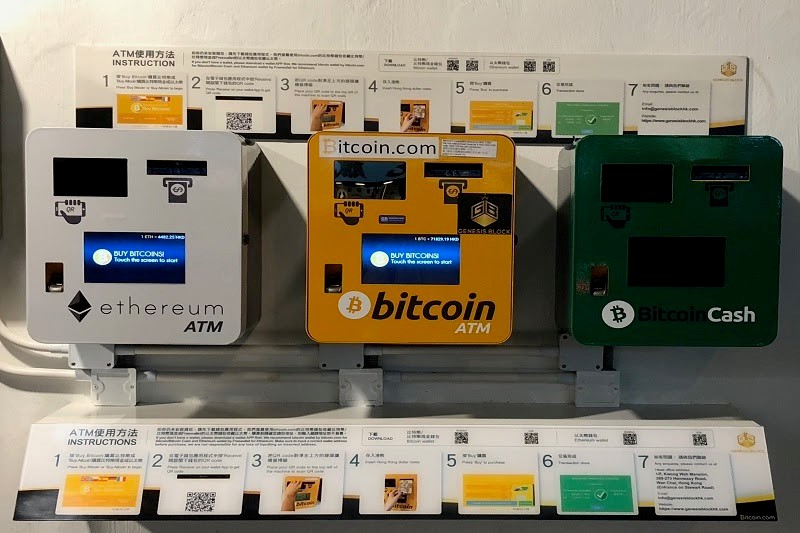
Overview of Digital Currency – Part 2: The Milestones in the Process of Development
Digital currencies have been through a multitude of stages and historic milestones to gain its wide-accepted reputation of today. Despite the alarming rise in cases of fraud, digital currencies remain a phenomeon and a global trend.

Stage 1: Idea formation (1995 – 1998)
The idea of a new digital currency was first mentioned in the late 80s of the last century, when people envisioned a form of currency that could be sent without leaving a trace and without the need to go through centralized systems (banks) to authenticate transactions. In 1995, an American cryptologist called David Chaum implemented an anonymous form of cryptocurrency called Digicash. This is considered an early form of electronic payments that requires users to install software to be able to withdraw money from banks and needs to be encoded into a string of characters before being sent to another person.

Before cryptocurrencies started their era in 2008, it can be said that the forerunners of Bitcoin were Digicash and Bit Gold.
Bit Gold, commonly known as the forerunner of Bitcoin, was designed in 1998 by Nick Szabo. It requires participants to provide computing power to solve cryptographic problems, and the solvers receive rewards.
If we combine the ideas of Chaum and Szabo together, it will create a product that is almost similar to today's Bitcoin. However, one thing that Szabo cannot solve is that electronic transaction data can be copied easily without a centralized system to manage and control. It was not until a decade later that an anonymous person with the pseudonym Satoshi Nakamoto published a whitepaper titled “Bitcoin – A Peer to Peer Electronic Cash System”, opening the official era of cryptocurrencies.
Stage 2: The beginning (2008 – 2010)
On October 31, 2008, Satoshi Nakamoto – the pseudonym of a group of anonymous programmers published a whitepaper about the Bitcoin, a peer-to-peer system of digital currency, in which he described the functions of Blockchain in the Bitcoin. It can be seen that Satoshi’s group had started the Bitcoin project since August 18, 2008, when they bought the domain name Bitcoin.org. Another interesting thing to consider is that, but for the Blockchain technology, Bitcoin and other cryptocurrencies would not have been created.
The history of the Bitcoin began from there onwards. Satoshi Nakamoto “dug” the first block of the Bitcoin network on January 3, 2009. The first block of 50 Bitcoin is considered the Genesis Block, and January 12 marked the first transaction with 10 Bitcoin from Nakamoto to Hal Finney, a computer programmer. Bitcoin seemingly had no value in the first few months of its apparance. Six months after the currency came to transaction, the value of a Bitcoin was even less than 14 cents. In May 2010, the most expensive pizza in history was bought with 10.000 Bitcoin, and till the beginning of November, the value of Bitcoin increased to 36 before stabilizing at 29 cents.
Stage 3: The formation of the market (2010 – 2013)
Despite not being popular among the public, Bitcoin showed that its value could increase rapidly. In February 2011, the price of a Bitcoin increased to $1.06 and when the article about cryptocurrencies appeared on the Forbes (the US), it even rose to $8.89 in late May.
After an article was published on gawker.com about the attractiveness of cryptocurrencies in the community of online drug traffickers in June 2011, the price of a Bitcoin reached $27, tripling itself in just three weeks. The total transaction value of Bitcoin reached $130 million. Nevertheless, it reduced to around $4.77 in September. At this point, while Bitcoin is criticized for being used in the transactions on the dark webs like Silk Road, other cryptocurrencies were established: Litecoin, Namecoin, and Swiftcoin, pressuring the market. The total market capitalization of Litecoin ranked second in the market, followed by Namecoin and seven other cryptocurrencies.
In 2012, the price of the Bitcoin rose constantly and the Bitcoin Foundation was established in September in order to promote the development and application of this cryptocurrency. Also in this year, another cryptocurrency called Ripple was established and funded by adventurous investors.
In 2013, the owners of the Bitcoin failed to agree on new trading rules, leading to a Bitcoin fork and blockchains are split into two separate operating networks. Simultaneously, many different countries around the world looked for the best way to deal with cryptocurrencies. Thailand banned on the use of Bitcoin under any circumstances and announced that it is illegal to conduct transactions using cryptocurrencies. The German Minister of Finance does not accept Bitcoin as an official currency but may view it as a unit of account in order to prepare a future regulatory framework for taxing Bitcoin-based transactions. Similar to Thailand, the People's Bank of China (PBC) banned financial institutions from using Bitcoin and this has significantly reduced the value of the cryptocurrency. However, in Vancouver in Canada, by contrast, the first automatic teller machine (ATM) with Bitcoin was installed.
Stage 4: A boom in fraud (2014 – 2015)
The anonymity and a decentralized attestation system make cryptocurrencies lucrative investments and opportunities for criminals. In January 2014, Mt.Gox, the largest Bitcoin exchange at the time collapsed and had to declare bankruptcy, causing 850,000 Bitcoin losses to investors. Although it is impossible to know exactly what happened, many people believe that investors' Bitcoins on the Mt.Gox exchange have been stolen over time since 2011 and resold on other exchanges to exchange for cash, resulting in investors finding themselves empty-handed upon checking their “e-wallets” one day.
In 2015, a security flaw caused the Bitstamp exchange in Europe to be hacked, but fortunately the system recovered a few days later and no customers were harmed. It can be seen that the attacks on cryptocurrency exchanges are not just isolated events but are increasingly becoming a major threat to investors. Some exchanges now offer insurance packages for investors should similar situations happen. In addition, crypto traders are advised to use hardware wallets or software wallets to store cryptocurrency instead of leaving it on the exchange.
Stage 5: Cryptocurrency becomes a phenomenon and a global trend (2016 – 2020)
In 2016, cryptocurrencies continued to become a mainstream in the financial technology sector. The number of ATMs to withdraw cash from Bitcoin increased from 500 to a little fewer than 900 in just one year. The famous ride hailing service company Uber in Argentina switched to Bitcoin payment and the national train system in Switzerland also allowed customers to pay with Bitcoin.

At this point, the price of Bitcoin was steadily increasing every year
The price of Bitcoin at this time was also increasing every year, from $434 at the beginning of 2016 to $998 in January 2017. Also in 2017, Bitcoin underwent an upgrade to create a new blockchain fork, which was Bitcoin cash, in order to increase the system processing capacity on a large scale. Bitcoin user community gradually expanded across the continents. Japan passed a law allowing Bitcoin to become legal tender for payments and Skandiabanken in Norway integrated Bitcoin accounts into the payment system and regarded Bitcoin as an investment asset in the market.
Another cryptocurrency that emerged strongly in 2017 and took second place in the market was Ethereum. The outstanding feature of this coin is that the smart contract is integrated into the system, creating the potential to be used for many different projects. However, there were also many other cryptocurrency systems that competed with Ethereum like Cardano or Tezos, causing the total market capitalization of cryptocurrencies to grow rapidly.
In 2018, Samsung, the world's leading electronics group confirmed that it was producing microprocessors for cryptocurrency mining. Many governments in Europe worked together to create specific regulations for this currency as well as to form new initiatives for national and regional monetary systems.
Facebook announcing the Libra coin project and China being forecasted to be the first economy to issue a central bank digital currency (CBDC) are two of the most important events in 2019. Although Bitcoin was gradually seen as an investment asset in the market, the U.S. Securities and Exchange Commission (SEC) completely banned the form of Bitcoin exchange-traded fund (Bitcoin ETF) from appearing on the market. This year, the world also witnessed a series of cryptocurrencies exchanges being attacked despite previous warnings about cybersecurity and security holes.
In 2020, the Bitcoin price continued to rise and broke a series of previous records. The total capitalization of Bitcoin is around $500 billion with the price of each Bitcoin approaching $30,000 by year-end. The trend of issuing CBDCs from China spread to many countries around the world, but it was the Bahamas that was the first country in the world to officially launch a CBDC called Sand Dollar, which is also based on blockchain technology. In December 2020, Coinbase exchange announced plans to make the initial public offering (IPO) and listed on the US stock exchange with a valuation of about $28 billion. The Fortune magazine commented that this was an important milestone for the cryptocurrencies industry, opening up transparency in the management of cryptocurrencies exchanges in the future.
See the full research paper "Digital Currencies and a New Generation of Global Monetary System" by the authors here.
The group of authors: Dr. Le Dat Chi, MSc. Truong Trung Tai, MSc. Nguyen Trieu Dong, (UEH School of Finance).
This is an article in the series of articles spreading research and applied knowledge from UEH, cordially invites readers to read the DIGITAL ECONOMIC Knowledge Newsletter 8 An Overview of Digital Currency part 3 "The Central Bank Digital Currency (CBDC) and the New Monetary System”.
News, photos: The group of authors, Department of Marketing and Communication


![[Podcast] Does the Financial Flexibility Prevent Stock Price Crash Risk during COVID-19 Crisis? Evidence from the Vietnamese Stock Market](https://en.ueh.edu.vn/images/upload/thumbnail/ueh-thumbnail-114718-071624.png)
![[Podcast] An Evaluation Of Two Business English Course Books, Business Partner B1+ Business Partner B2: Students’ And Teachers’ Perspectives](https://en.ueh.edu.vn/images/upload/thumbnail/ueh-thumbnail-113649-071624.png)


![[Podcast] Latest approaches for sustainable universities](https://en.ueh.edu.vn/images/upload/thumbnail/ueh-thumbnail-042022-071224.png)